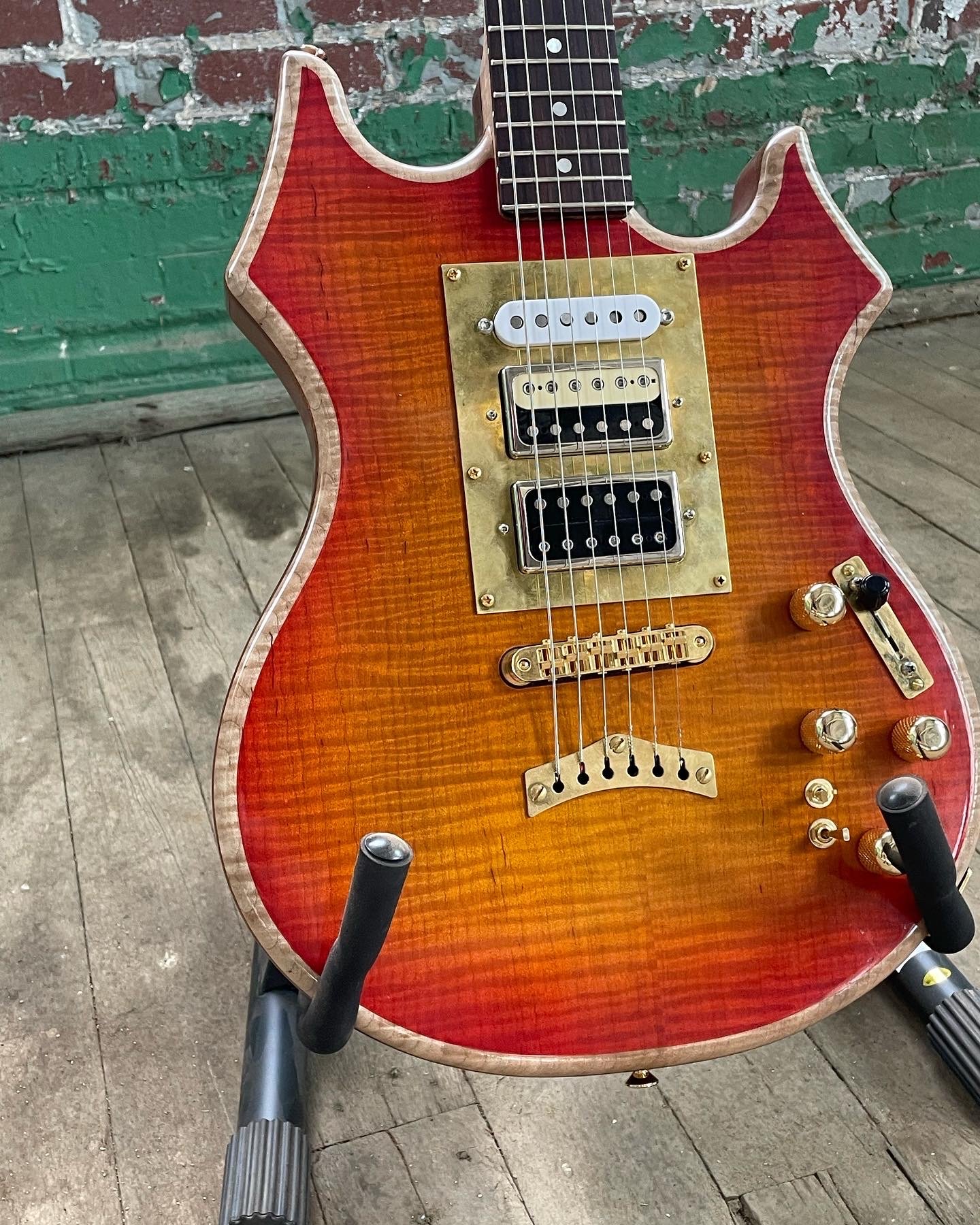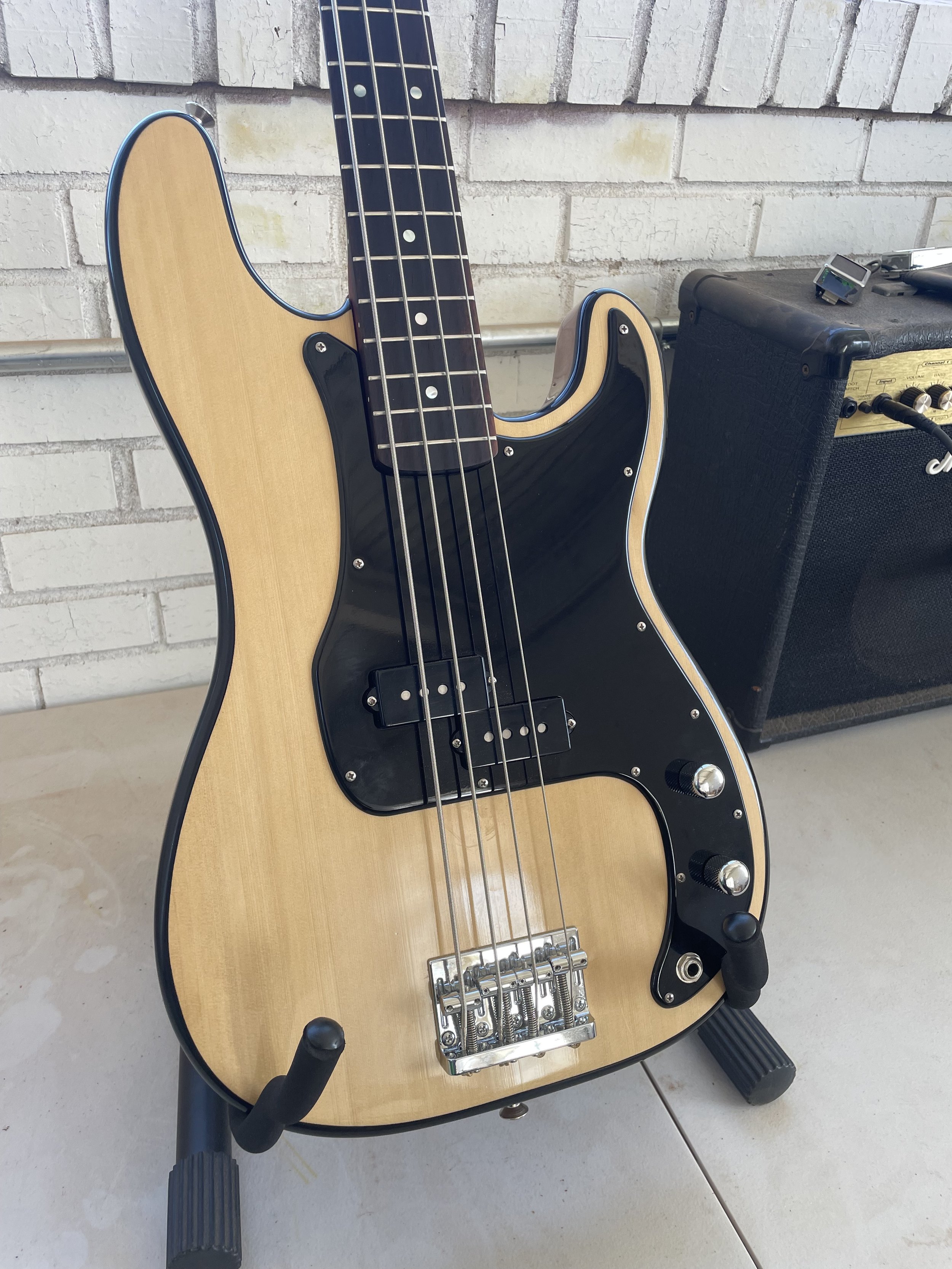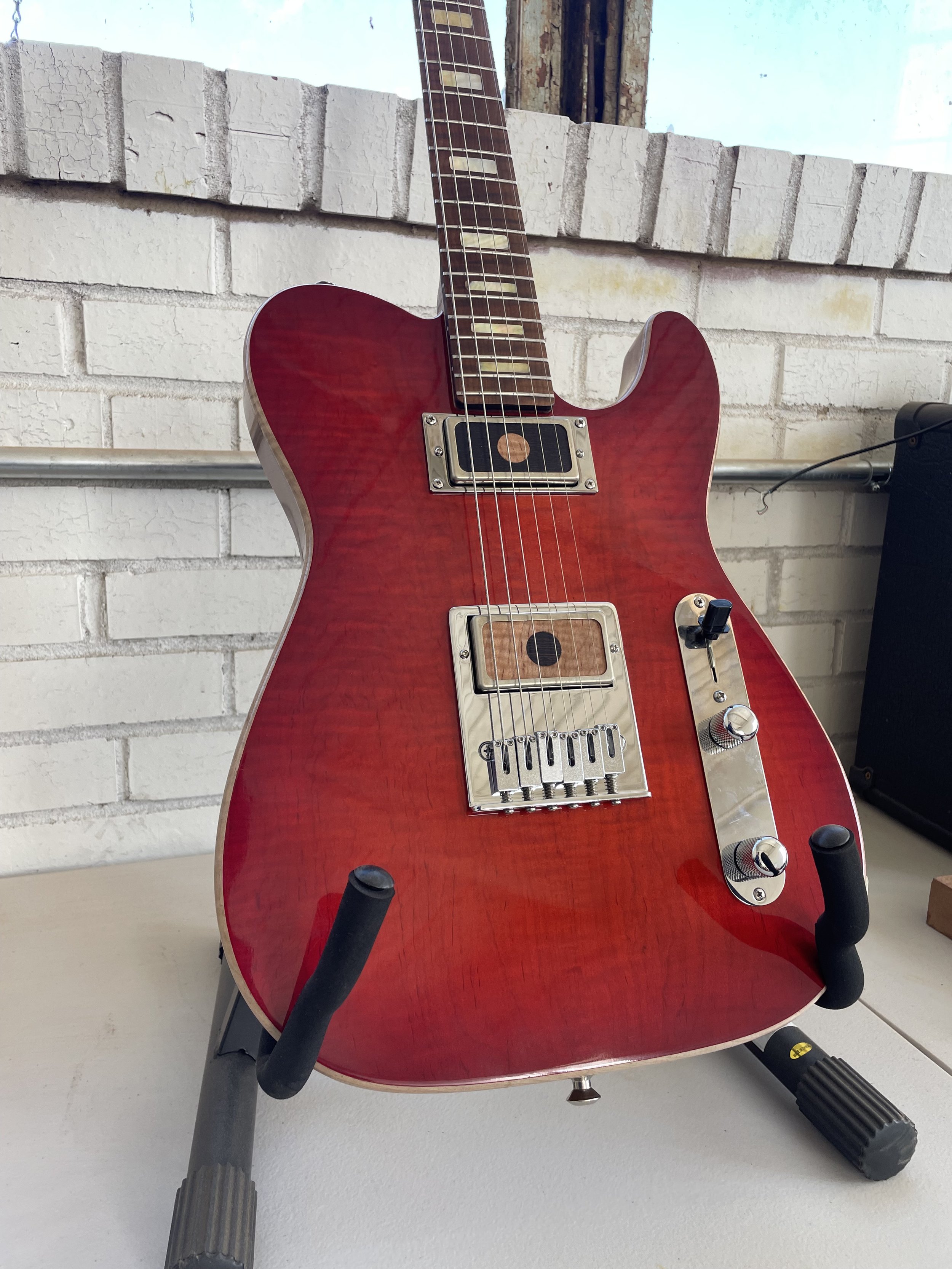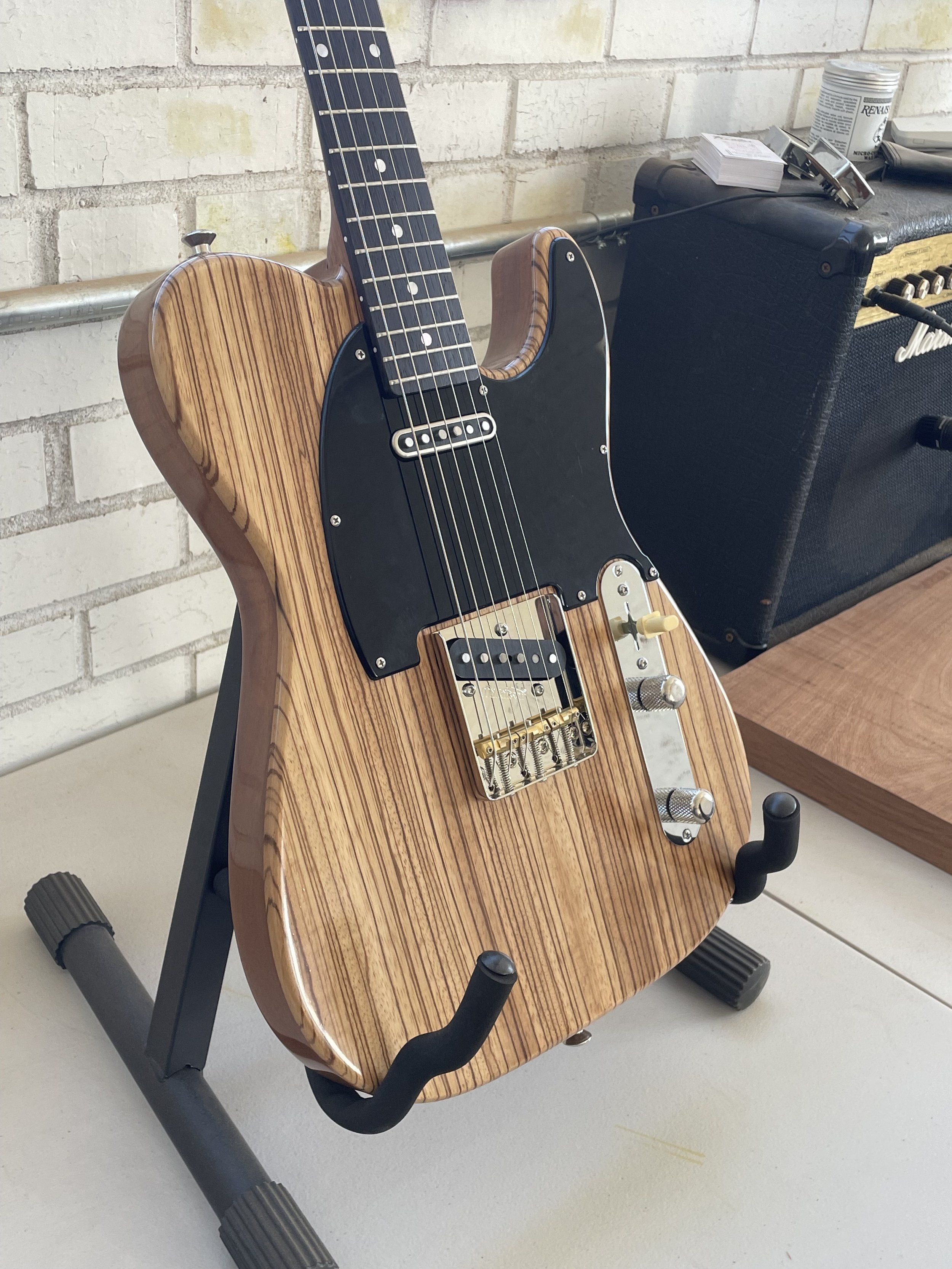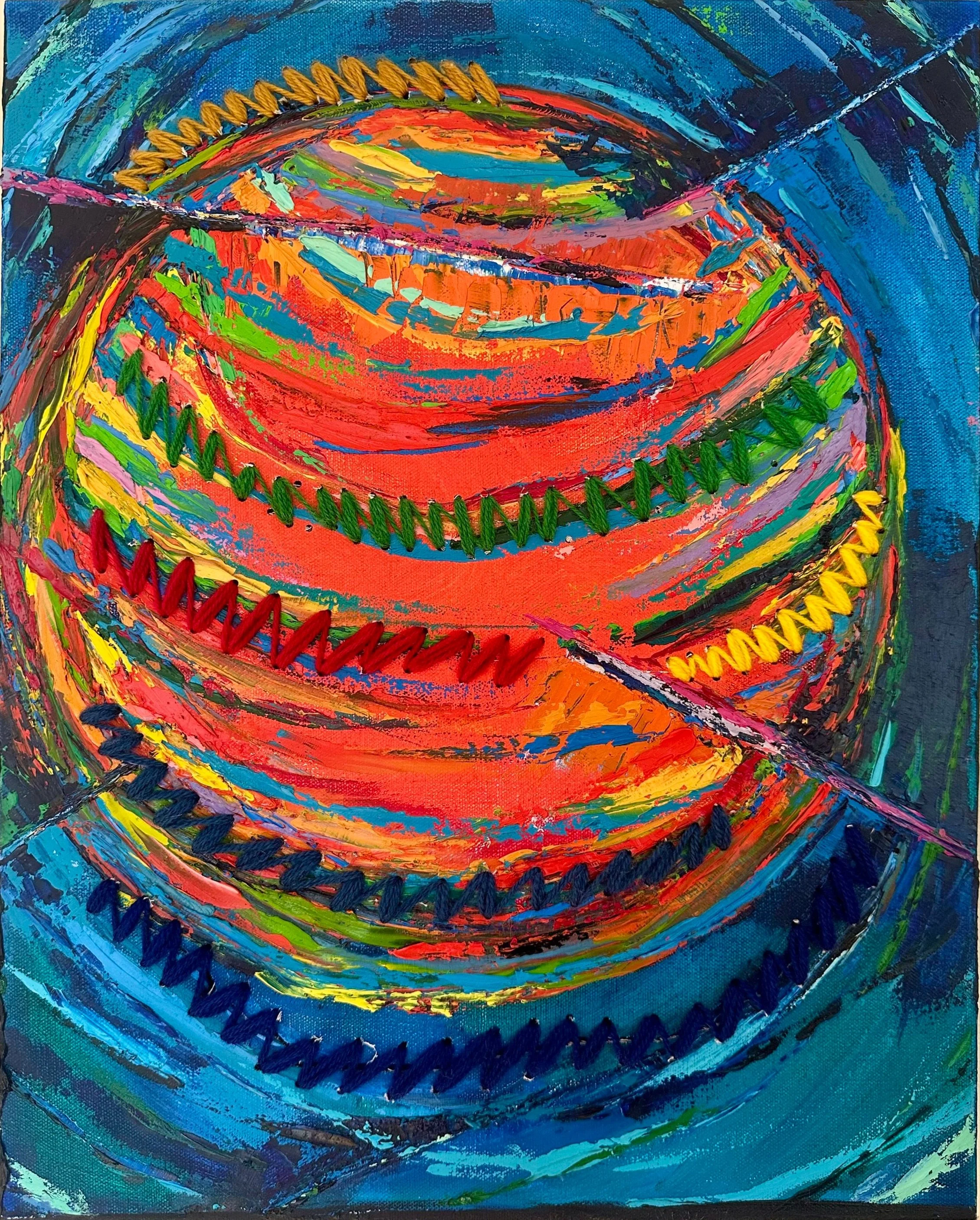
1st and 2nd Floor Galleries
New Members Show 2024
January 3 - February 2, 2025
First Friday Opening Reception
January 3, 5:30-7:30pm
Andrea Echeverri-Gent, detail, Self-Portrait, Mixed media
2024 New Members
Gabriela Bettmann-Kerson
Mark Chapman
Andrea Echeverri-Gent
Jennifer Esser
Joan Marie Giampa
Russell Hart
Grace Little
Suzanne Loechl
Chicho Lorenzo
Richard Montoya
Meg Norling
Adriana Patrucco
Mimm Patterson
Gracen Rinehart
Erika Schmitt
Danielle Stevens
Alexander Vassalos
Lauren Williams
Mark Chapman
Mark Chapman has been making artwork for over 50 years; he joined McGuffey Art Center as an Associate Member this past Spring. He is recognized for his artwork associated with stained glass. This oil painting reflects a common technique that superimposes a transparent oil paint over the canvas called glazing. The feluccas are painted with nontransparent paint on top of the glazing to provide an ethereal element to the piece. Mark uses glazing in his oil paintings to simulate light variations commonly observed in stained glass art.
While visiting Egypt several years ago, I was able to travel on the Nile in a Felucca. This painting contrasts modern cubism art of fish beneath the surface of the water and above the water the fisherman on sail boats, feluccas, still used after thousands of years.
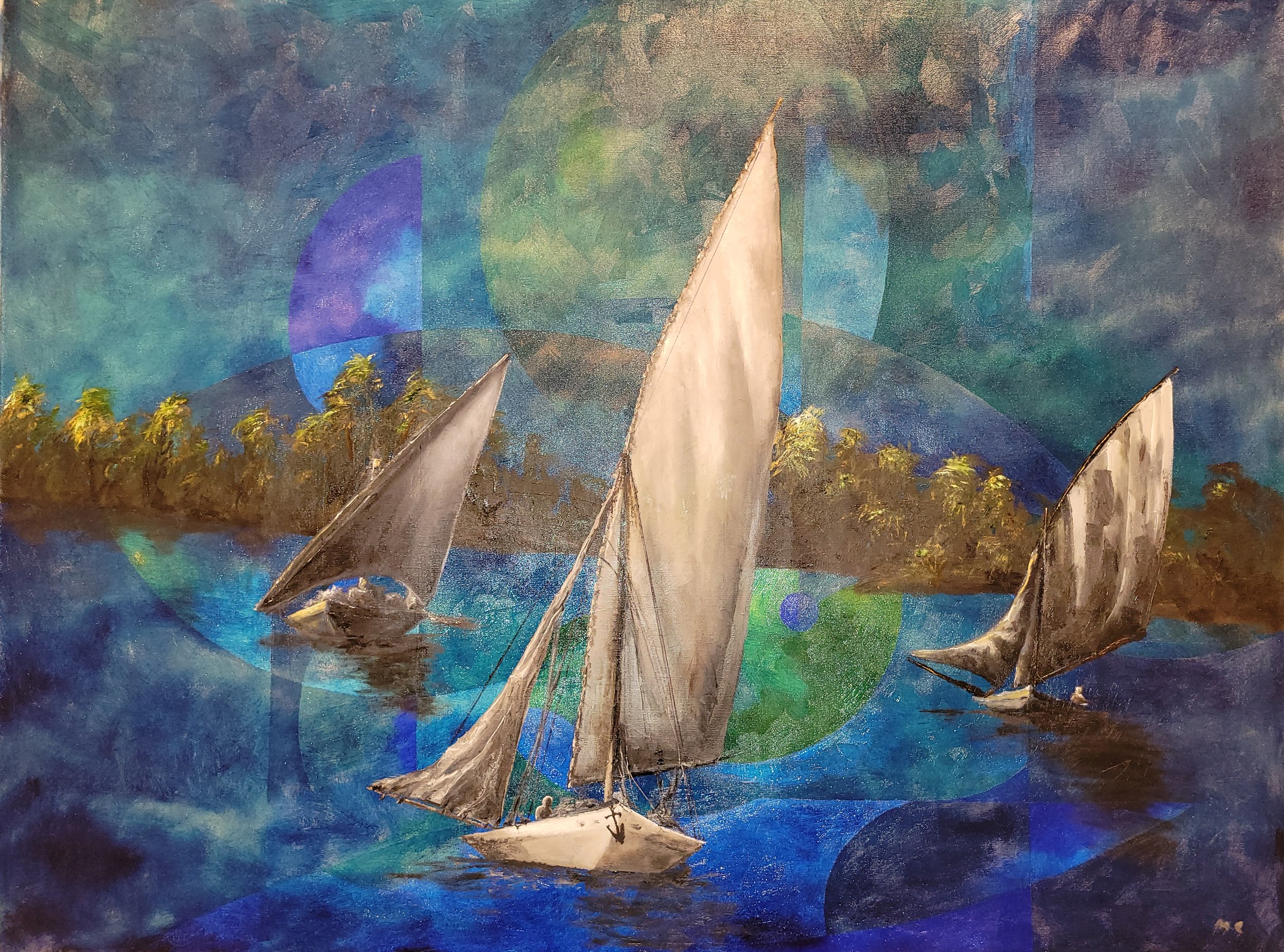
Mark Chapman, Fishing from Feluccas, oil on canvas
Andrea Echeverri-Gent
My oil painting series, Stories We Share, explore the delicate relationship between trauma, its aftermath, and the journey of healing. The canvas becomes a metaphor for the body and mind, fractured by emotional or physical wounds.
Once torn, the canvas is stitched back together using colored yarn, a process that symbolizes recovery and the complexities of mending. It is messy, intricate, and often imperfect, but it allows for a new narrative to emerge. The light that shines through the gaps in the fabric symbolizes hope, insight, and transformation. It suggests that while the canvas may be broken, there is still beauty and possibility in the spaces between.
The act of sewing becomes an acknowledgment of the strength required to heal, to rebuild, and to continue in the face of adversity. Through these acts of “reconstruction,” the pieces embody the tension between destruction and renewal, illustrating that trauma does not simply disappear, but rather becomes integrated into the fabric of our lives.
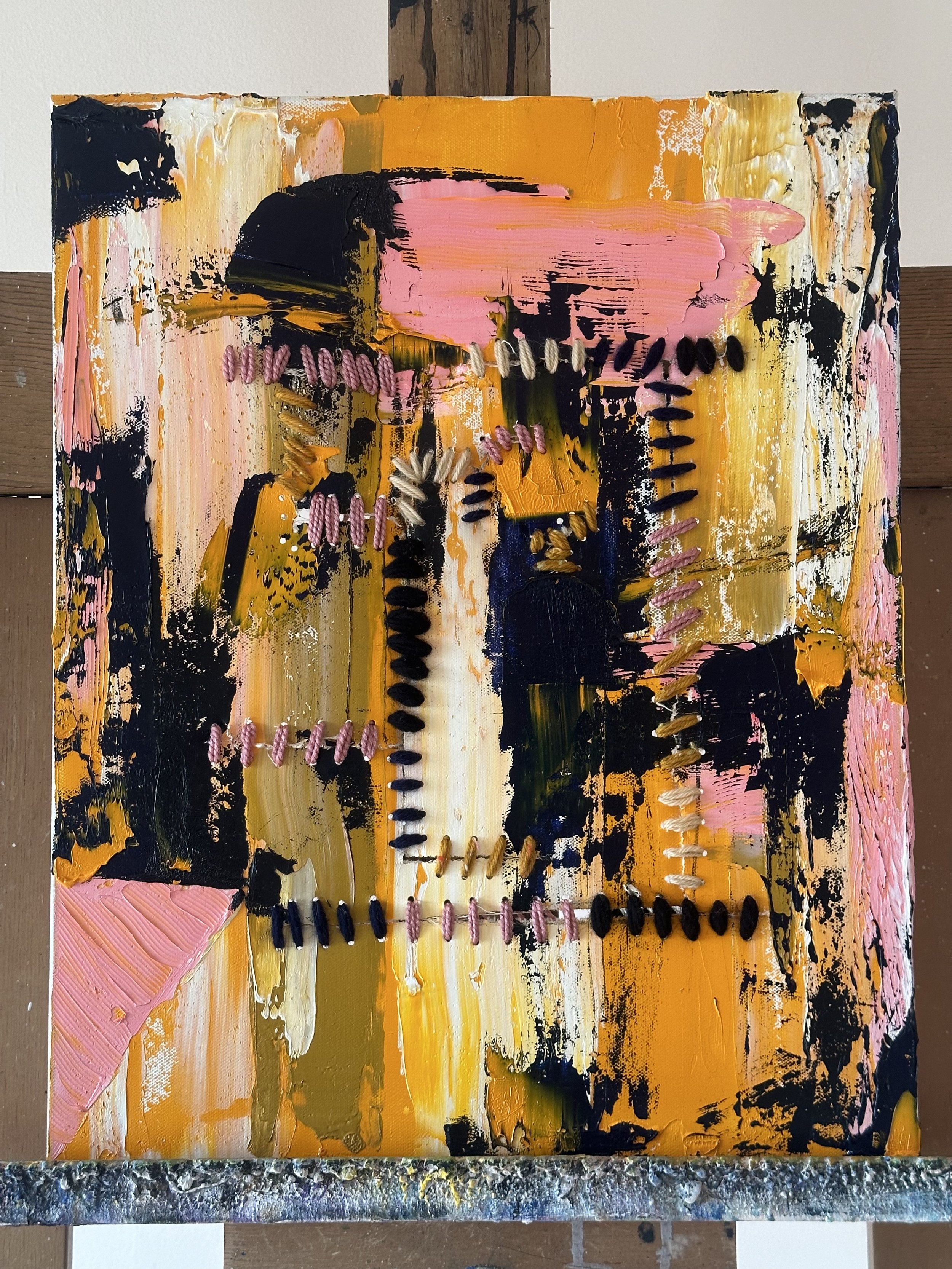
Andrea Echeverri-Gent, It Hardly Hurts Anymore, mixed media
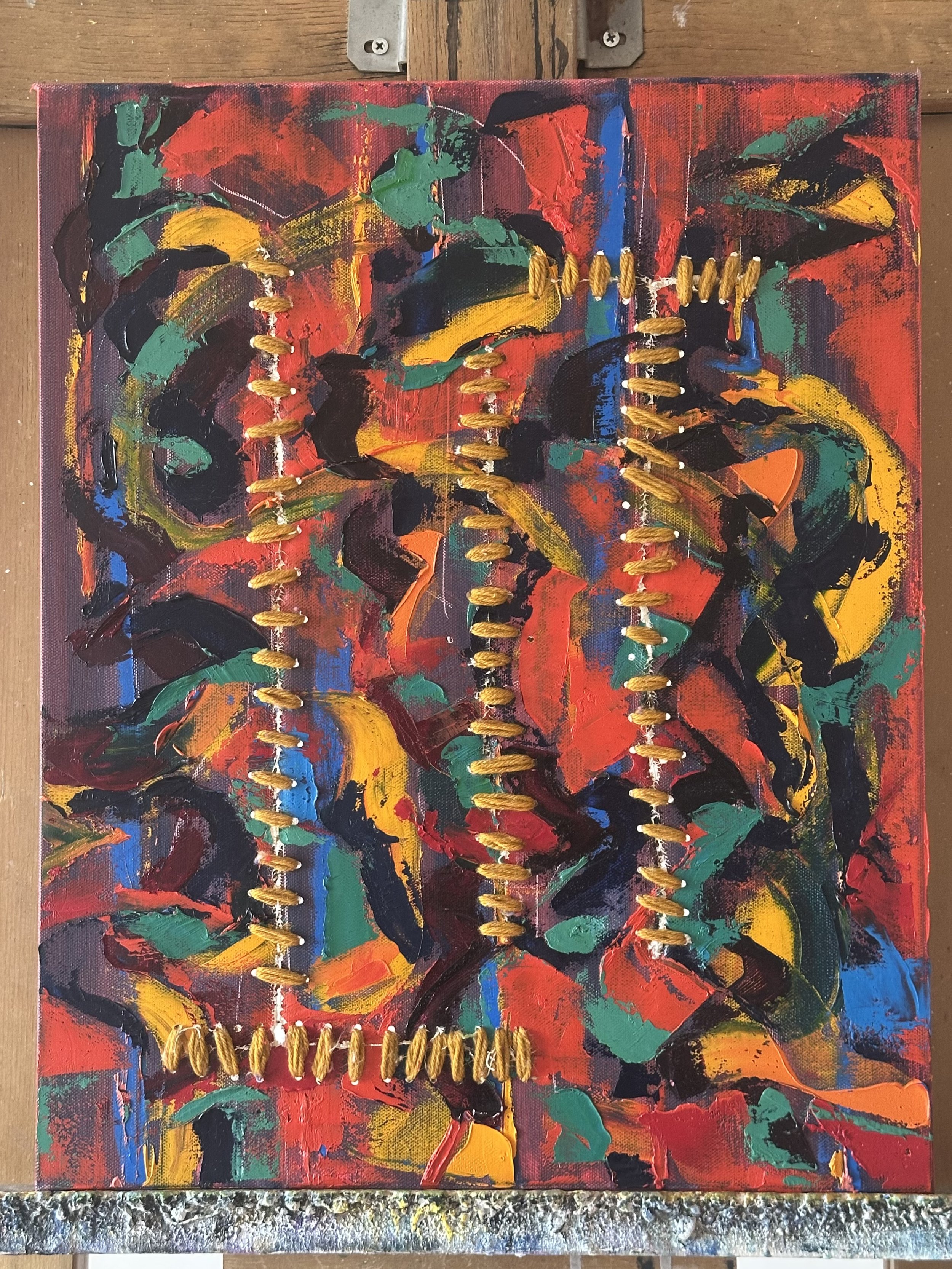
Andrea Echeverri-Gent, Scars Made of Gold, mixed media
Joan Marie Giampa
My painting process is centered on being fully present, where every brushstroke is a mindful act. Painting is a way for me to reconnect with the pure, playful creativity of childhood, a time when I could lose myself in the joy of creation without the constraints of adult life. This allows my work to flow intuitively and with a sense of exploration.
The subjects in my work—familiar objects from my surroundings—are more than visual elements; they become characters, telling layered stories that transcend their physical forms. Through these objects, I construct metaphors that express emotions, ideas, and the interplay of feelings, stories, and personal growth. Visual metaphor, a powerful tool in my practice, transforms each painting into a conversation between the visible and the invisible, inviting viewers to discover their connections and interpretations.
Through this process, every painting becomes a unique journey, inviting the viewer to explore and connect with my inner world and the broader experience it represents. Your interpretations and connections are an integral part of this journey.
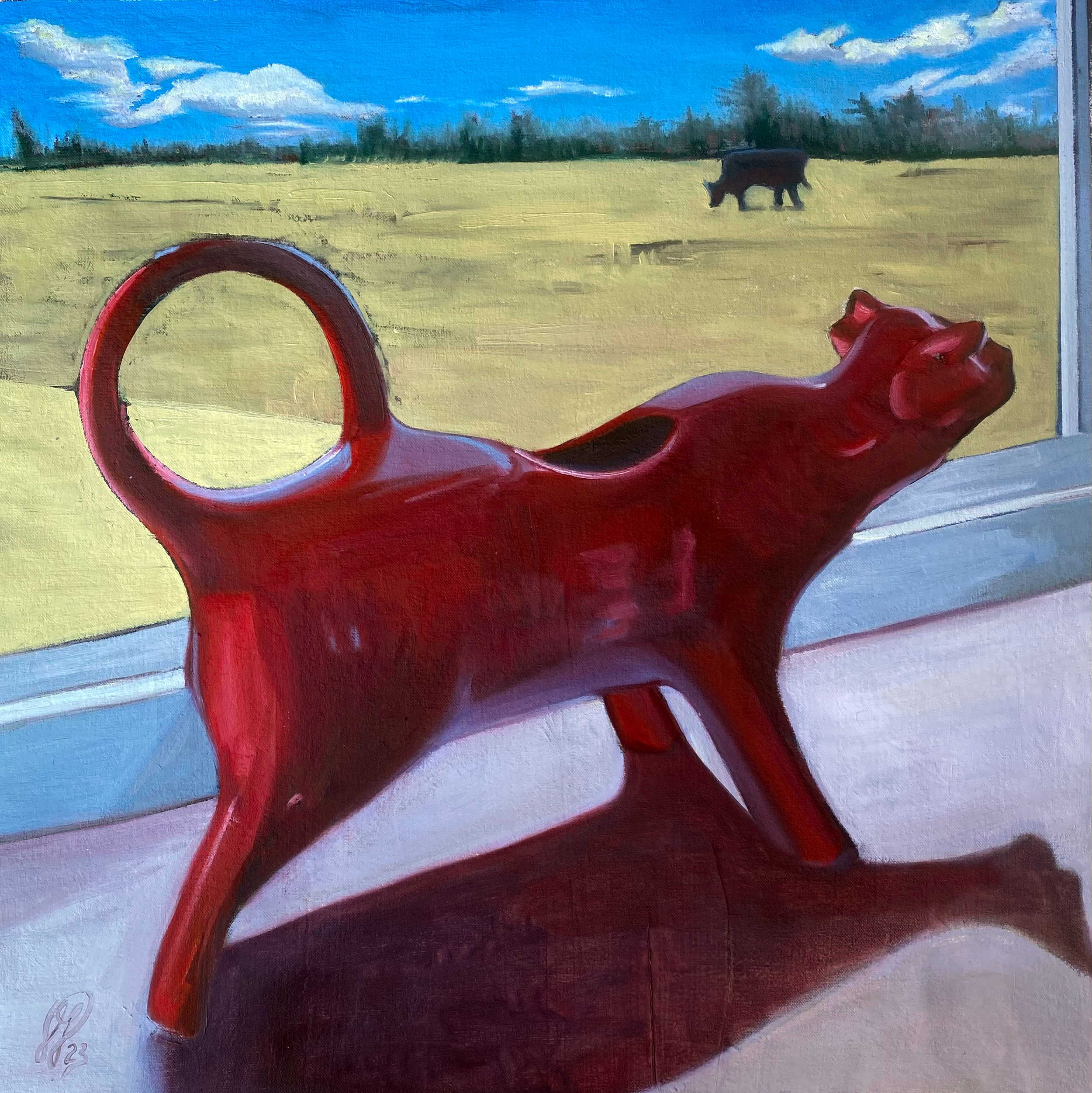
Joan Marie Giampa, Real, oil on canvas
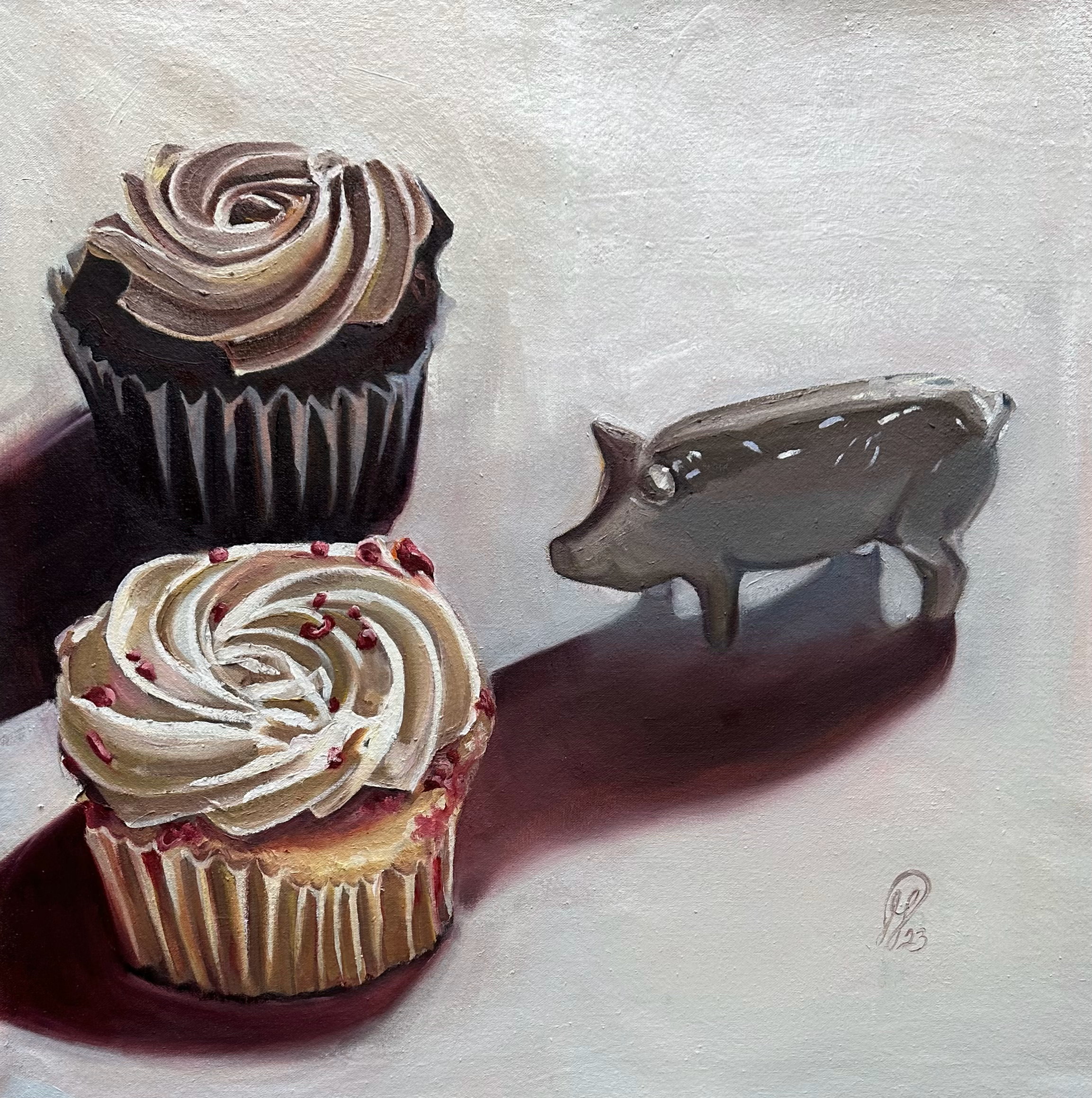
Joan Marie Giampa, Imaginary Lovers, oil on canvas
Russell Hart
Most of my work could be described as a study of the ways in which humans occupy and alter the natural landscape, but the photographs aren’t meant to be documentary or even realistic. Most of them are black and white, a medium I like because it helps me simplify a subject, minimalism being my longtime inclination as a photographer. Yet what was once a very reductive, even limiting approach has evolved into work that embraces complexity and detail, now encompassing not only occupied landscapes but also still lifes and interiors (in black and white) and color images of unaltered nature, though with non-realistic hues.
The black-and-white photographs in this show were taken on a trip to England’s Devon and Cornwall, counties in the country’s far southwest. Working in a given location is often transformative for me because I like to let the human and natural environments determine what kinds of photographs I take. My work might be considered old-fashioned in that it’s based on observation of the outside world, not on expressing a world view or sharing an intimate experience in the manner of so much contemporary art. While high-concept artwork that makes a political, philosophical, or personal statement certainly has its place, in the end my own work is art for art’s sake.
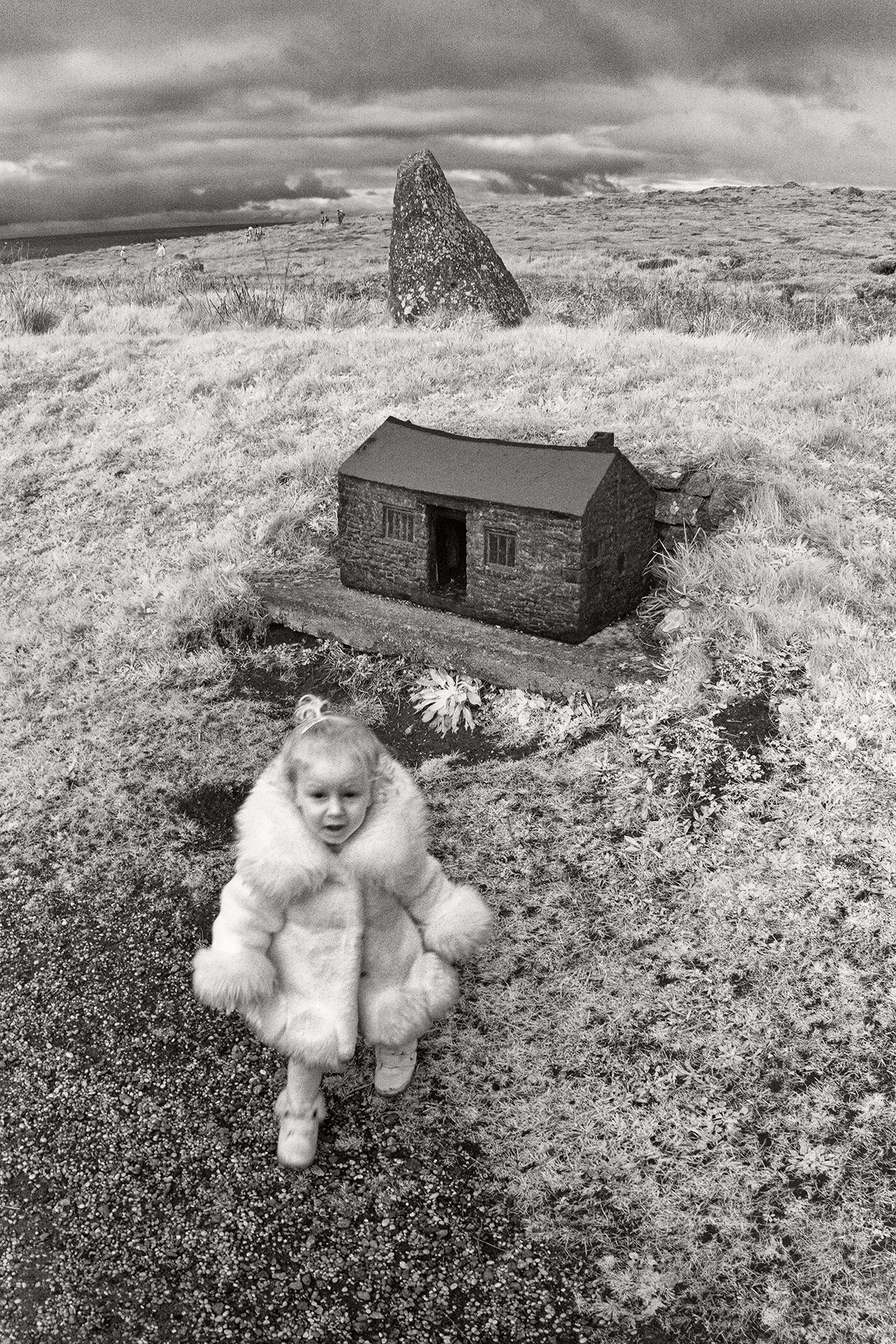

Grace Little
My work as a whole is created to be oasis-like, inviting viewers to explore the complexity that lies beyond the surface (of the painting). Recently, I have found inspiration in my spirituality & deep curiosity about the questions I have about life. Just like water flowing or trees rustling, the more we observe, the more we begin to recognize a "gentle complexity" in the way things are. This concept of “gentle complexity” is what I strive to express - the more you look, the more you become still, the more you notice. I then ask the question: is there a way for fine art to be of service to others? A way to slow down our minds and focus on the beauty & Word that has been so lovingly lavished on humankind. Every question simply a further invitation.
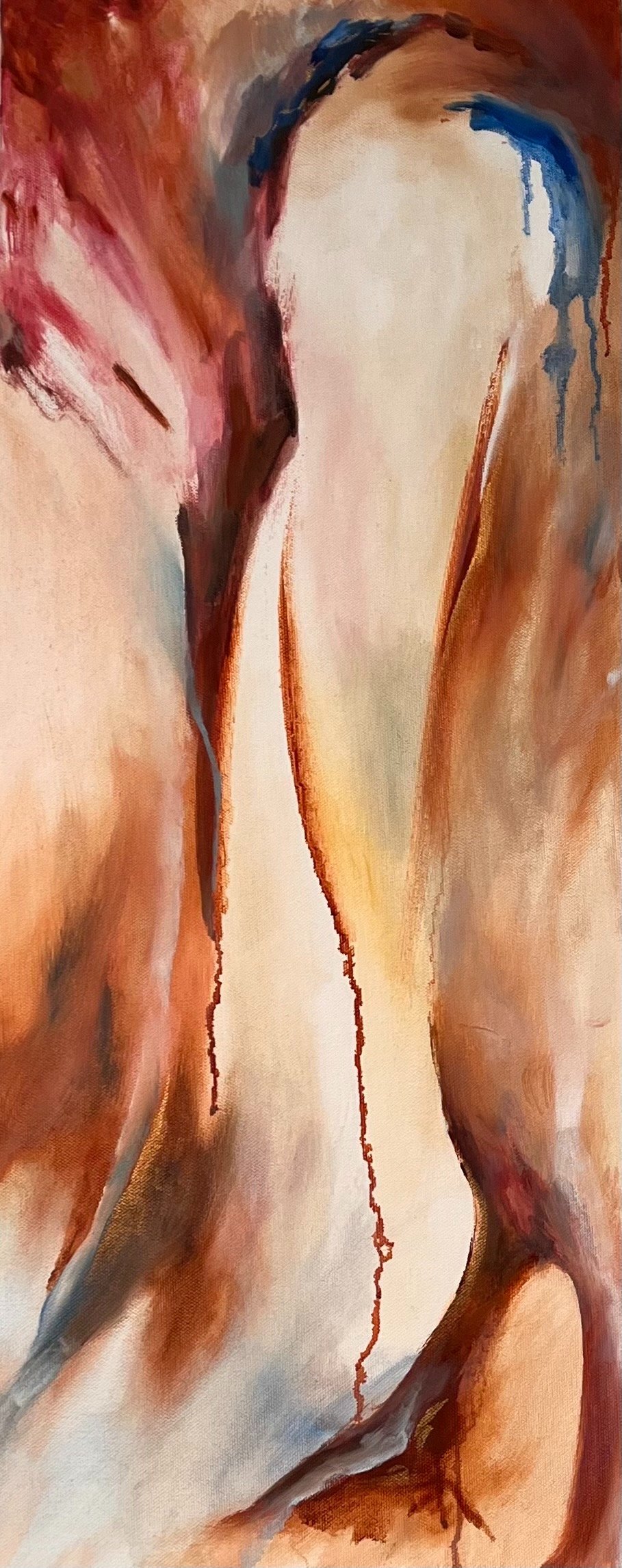
Grace Little, Hudria (III), oil
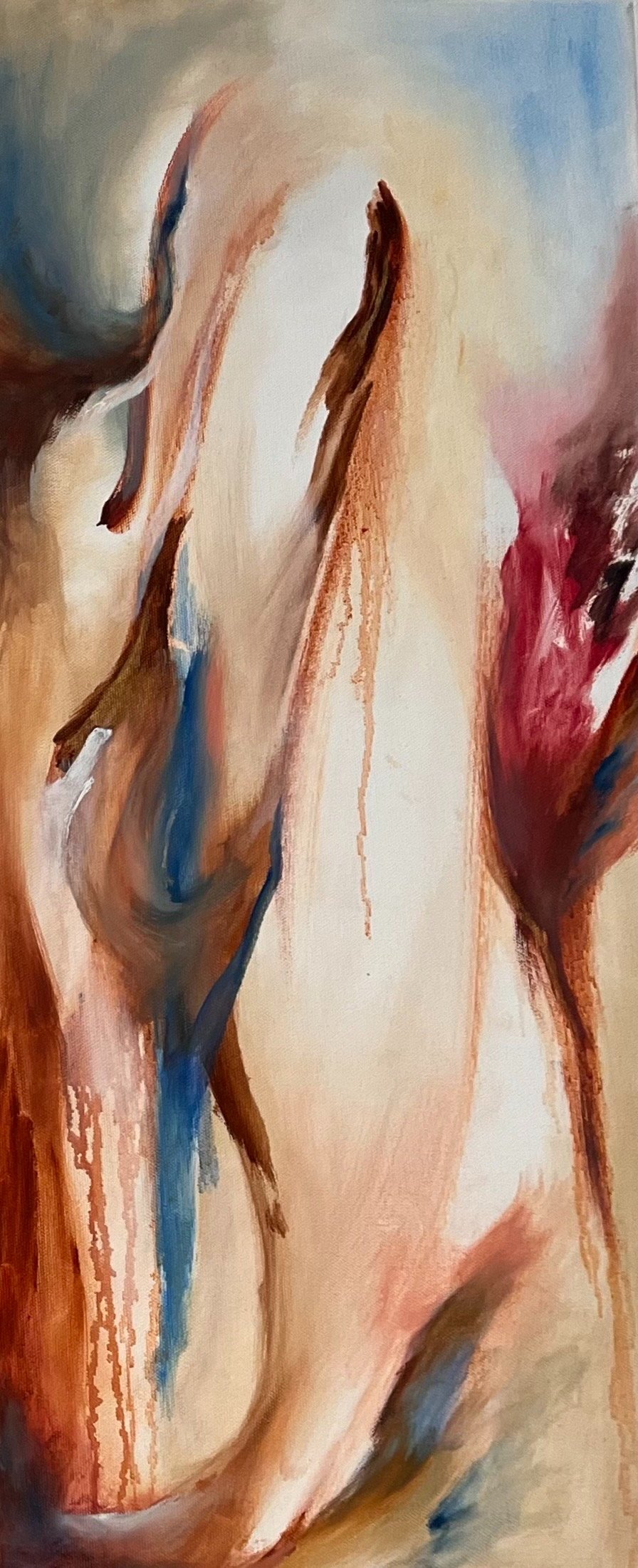
Grace Little, Hudria (II), oil

Grace Little, Hudria (I), oil
Suzanne Loechl
This exhibition showcases recent works of vividly rendered landscape and figurative paintings. Titled 'Pattern Language,' it reflects my interest in creating and juxtaposing patterns inspired by clothing, natural elements, and organic shapes.
I am deeply inspired by patterns and colors, creating visual landscapes influenced by the people and the land around me. My work is an ongoing exploration aimed at depicting the natural world and its inhabitants as both strikingly beautiful and profoundly fragile.
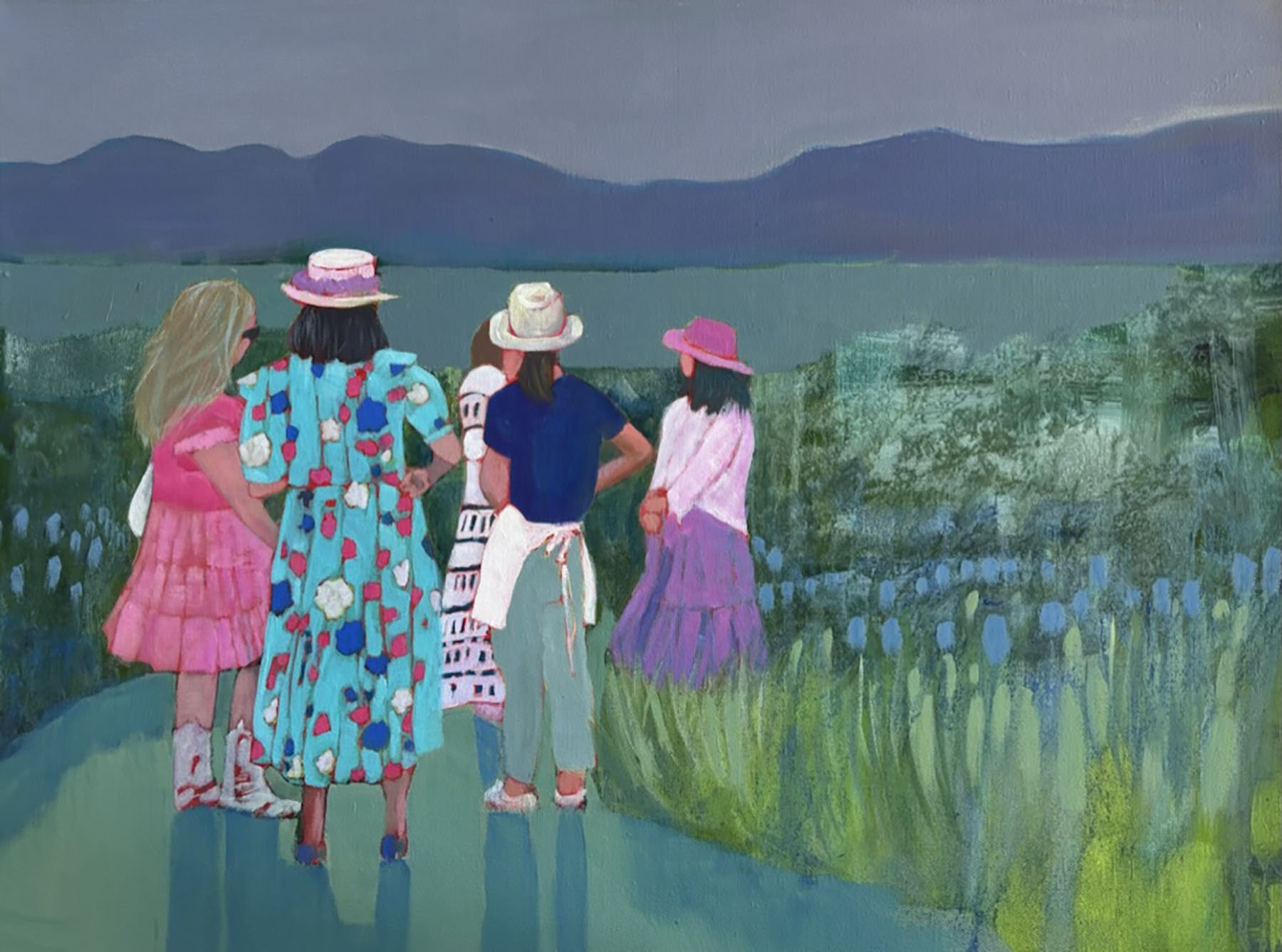
Suzanne Loechl, Garden Talk, oil on canvas
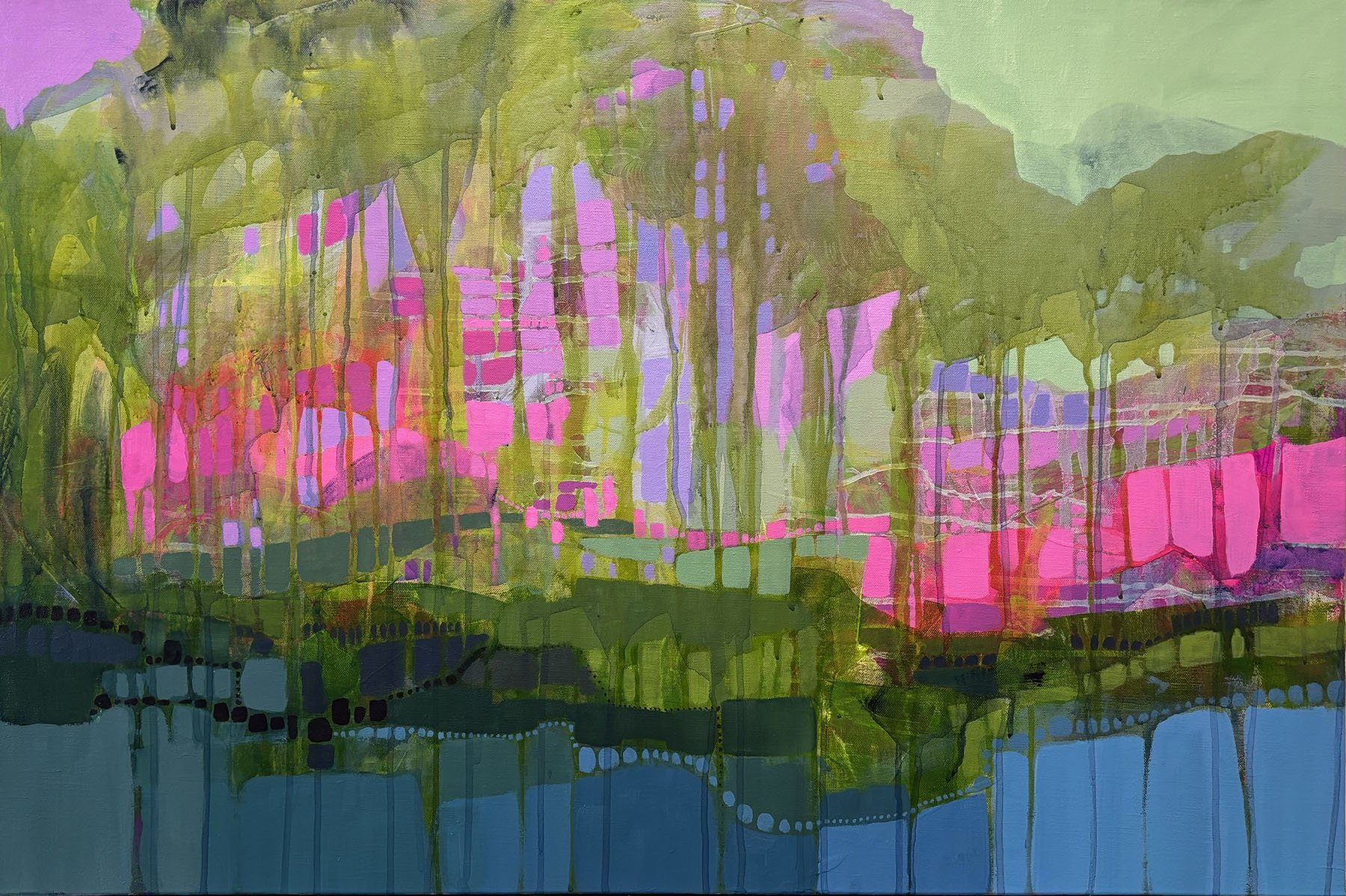
Suzanne Loechl, Glisten, acrylic on canvas
Richard Montoya
My work explores the interplay between text and imagery, creating visual wordplays that engage meaning and interpretation. My journey into using text as an art form began after attending Parsons School of Design in New York City. With a career spanning over 30 years, graphic design continues to profoundly shape how I perceive and utilize words, languages, and images to convey ideas and messages visually.
I am fascinated by the creative potential of typography—how reimagining, connecting, and transforming words and letterforms can uncover new meanings and communicate fresh ideas. The element of surprise, delight, and wonder that arises from visual illusions inspires my process. Capturing this sense of discovery and sharing it with viewers is at the heart of my artistic vision.
Words and images are powerful tools that engage the senses and provoke thought. Through my work, I aim to encourage viewers to rethink, question, or consider new perspectives. There is great reward in guiding others to see something they might not have noticed before, opening doors to fresh insights or even changing perceptions.
I am increasingly thinking of creative ways to play a constructive and redemptive role through my work, becoming a catalyst for positive change in my community and beyond. Ultimately, my goal is to invite people into the mystery and wonder of storytelling through text and imagery—encouraging them to engage with truth, beauty, and the joy of discovery.
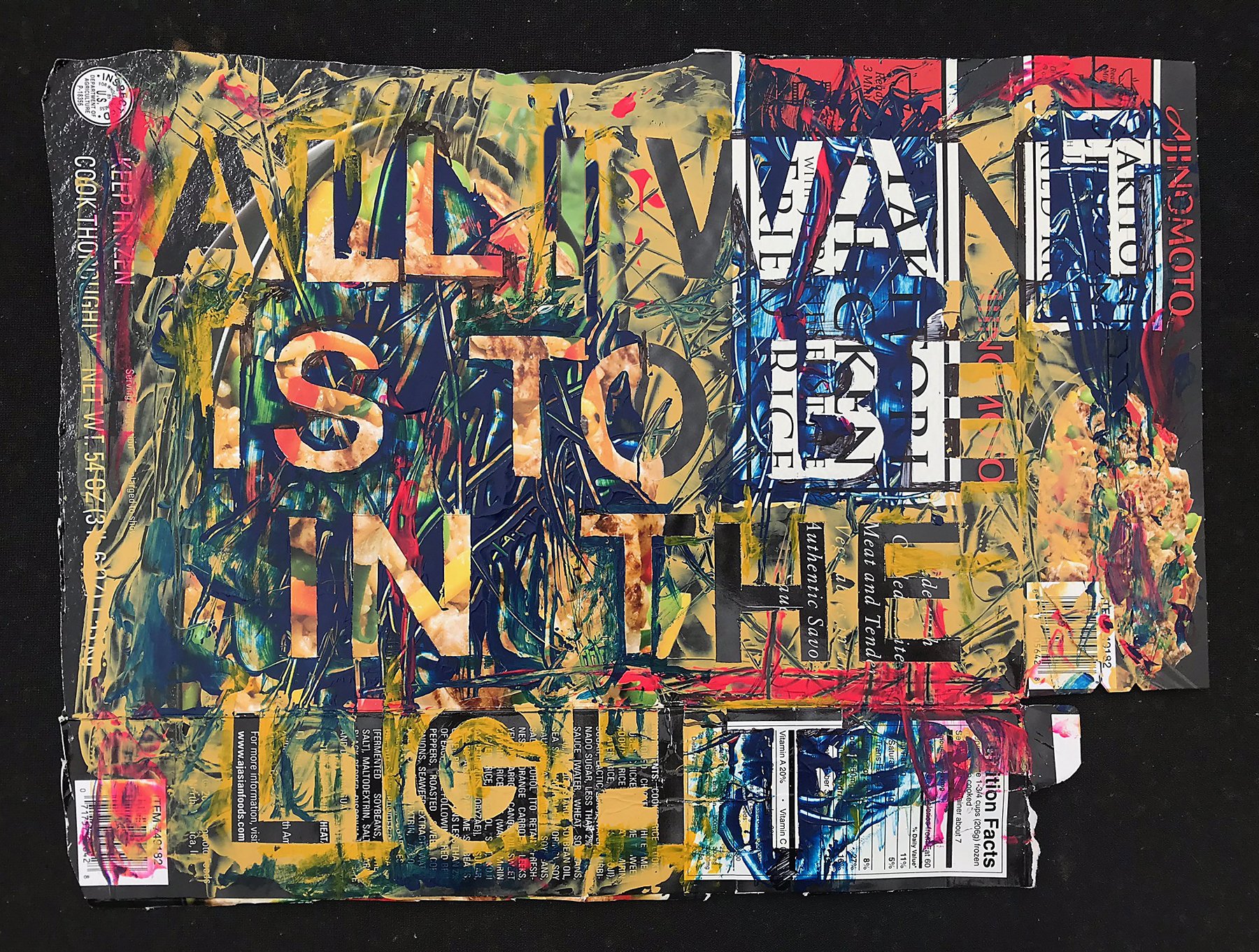
Richard Montoya, All I Want, acrylic on printed cardboard
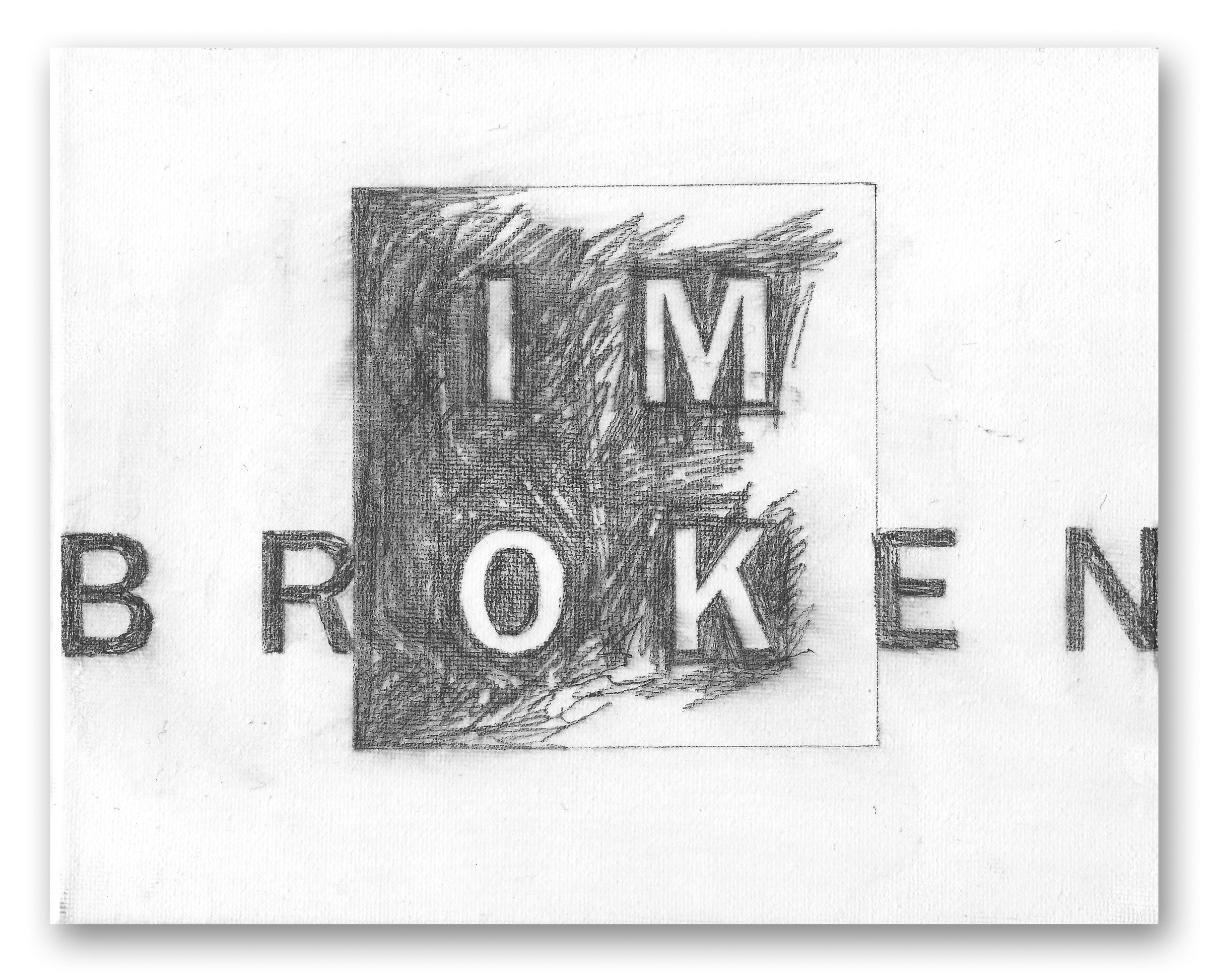
Richard Montoya, Im Broken, graphite on canvas
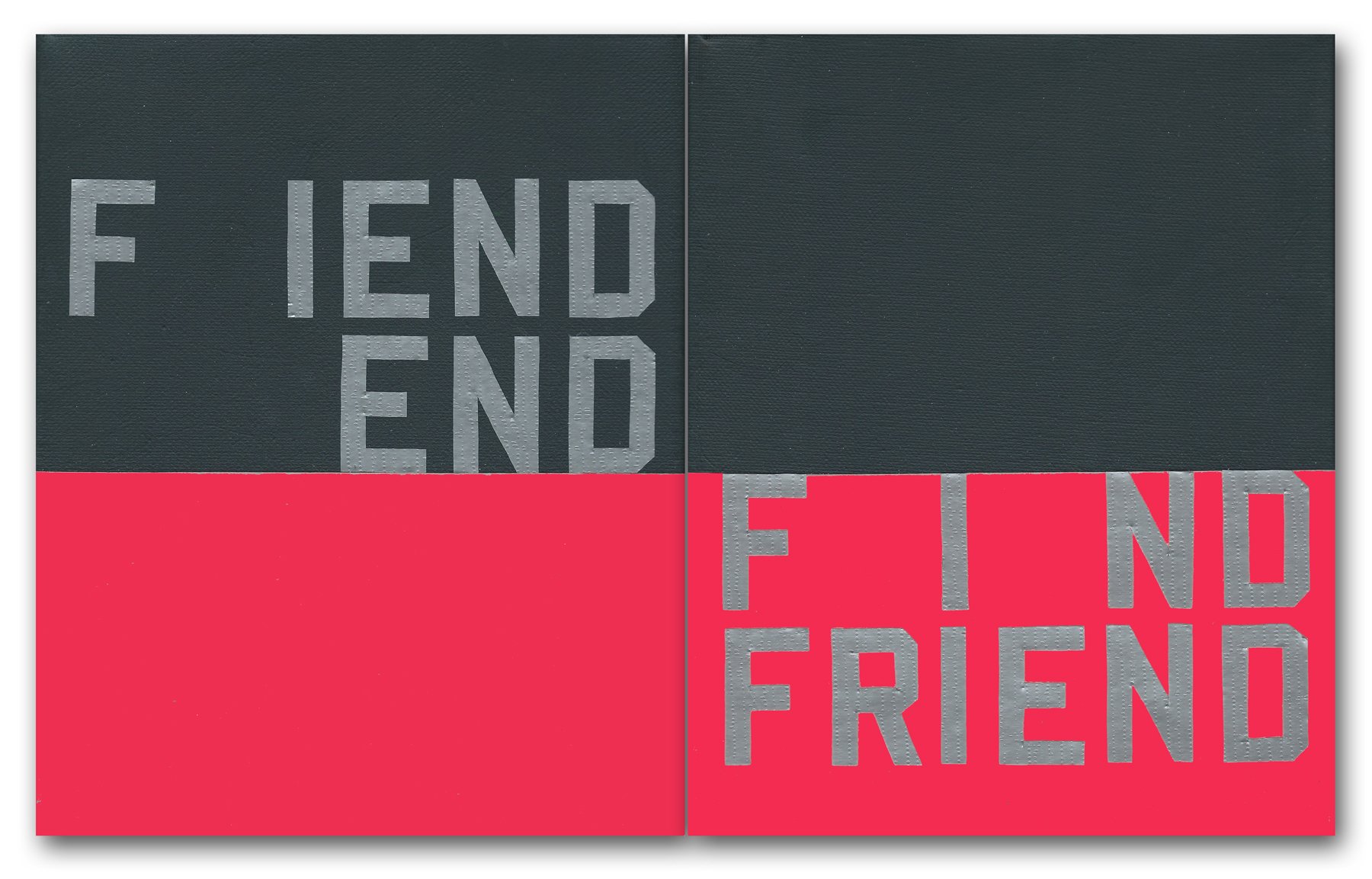
Richard Montoya, Fiend Friend, acrylic and duct tape on canvas
Meg Norling
My art expresses a mixed sense of humor, awe, anxiety, and distress about the world around us. Assemblage work particularly resonates with the explorer and scavenger in me; I love finding and piecing together disparate elements and ideas. Much of my work combines encaustic medium, photography, printed materials, and found objects.
I am curious about and inspired by the challenges we all face along life’s continuum. My work often takes a tongue in cheek look at some of our most potent human constructs: gender roles, sexism, romance, marriage, ageism. These constructs are especially relevant today, as we debate personal and societal freedoms.
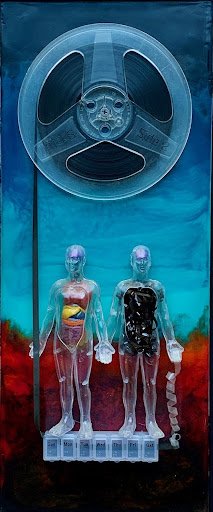

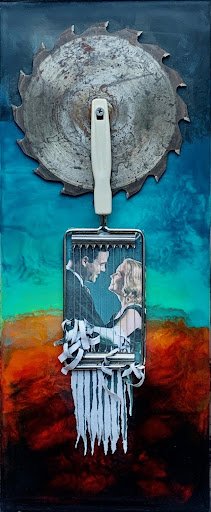
Adriana Patrucco
As a woman painter, I am seduced by the role of light and shadows in my paintings. For me, light and shadows are the main characteristics of my work, and also its main expressive device. Not only are these paintings a testimony of my daily life, but of my own personal history.
My Hispanic background —I was born and raised in Peru and came to the US as an adult— triggered my interest in the use of colors present in Andean popular art as well as in the techniques and expressive means of nineteenth and twenty-century painters such as John Singer Sargeant and Romaine Brooks. Light and shadow characterize my animal scenes, interiors, and portraits to convey an atmosphere of presence and human patina.
My work’s common denominator, thus, is the portrayal of human presence in a concrete space. For instance, the depiction of an artist studio featuring palettes and unfinished paintings as well as that of a scholar desk full of books and notes indicate the presence of someone about to come. I am convinced that light and shadow, as seen in my work, can transmit the daily life of people inhabiting these spaces.

Adriana Patrucco, American Kitchen, oil on canvas
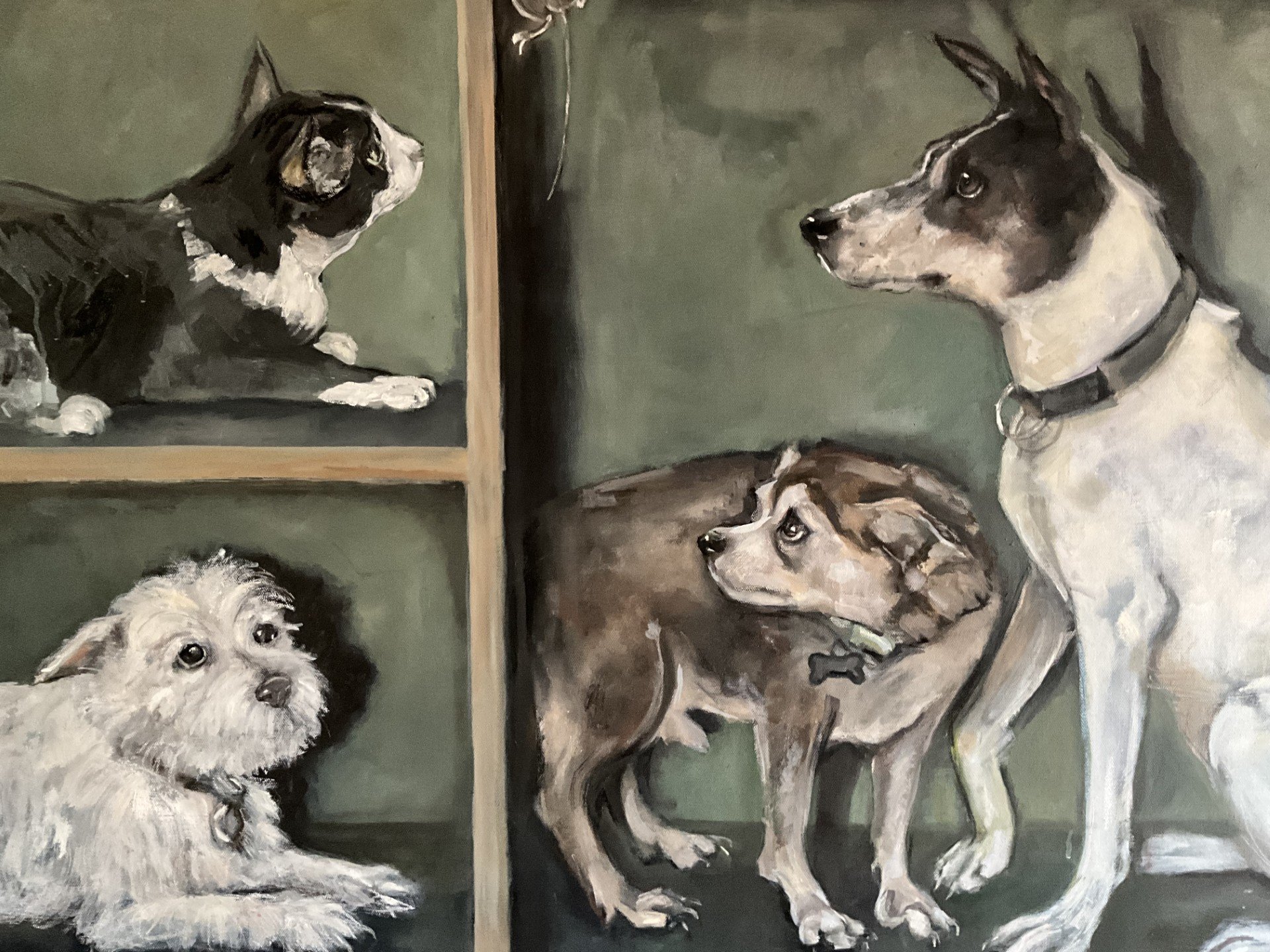
Adriana Patrucco, The Intruder, oil on canvas
Mimm Patterson
The six pieces in the New Members Show play with parts of speech. Specifically, nouns and verbs. They also continue my compulsion to see the ordinary as extraordinary.
The reason why I create is to discover who I am. I use photography to document the world around me, words and text as scaffolding to support the visual story I am trying to tell and encaustic medium to hold layers of the story together. In this series the story is very simple. A single object and a play on words to make the viewer smile.

Mimm Patterson, Flipped, encaustic photography

Mimm Patterson, Hammered, encaustic photography

Mimm Patterson, Screwed, encaustic photography
Erika Schmitt
Inspired by myth, story, poetry, and legend, my mixed media pieces reflect my passion for collecting old, unique, tattered objects and repurposing them. Breathing new life into objects that have long been forgotten.
I experiment with divergent, found materials to create allegorical, talismanic, complex assemblages in an effort to find balance with the whole - despite the incongruity of materials. My hope is to connect intimately with those who are curious and take the time to explore deeply.
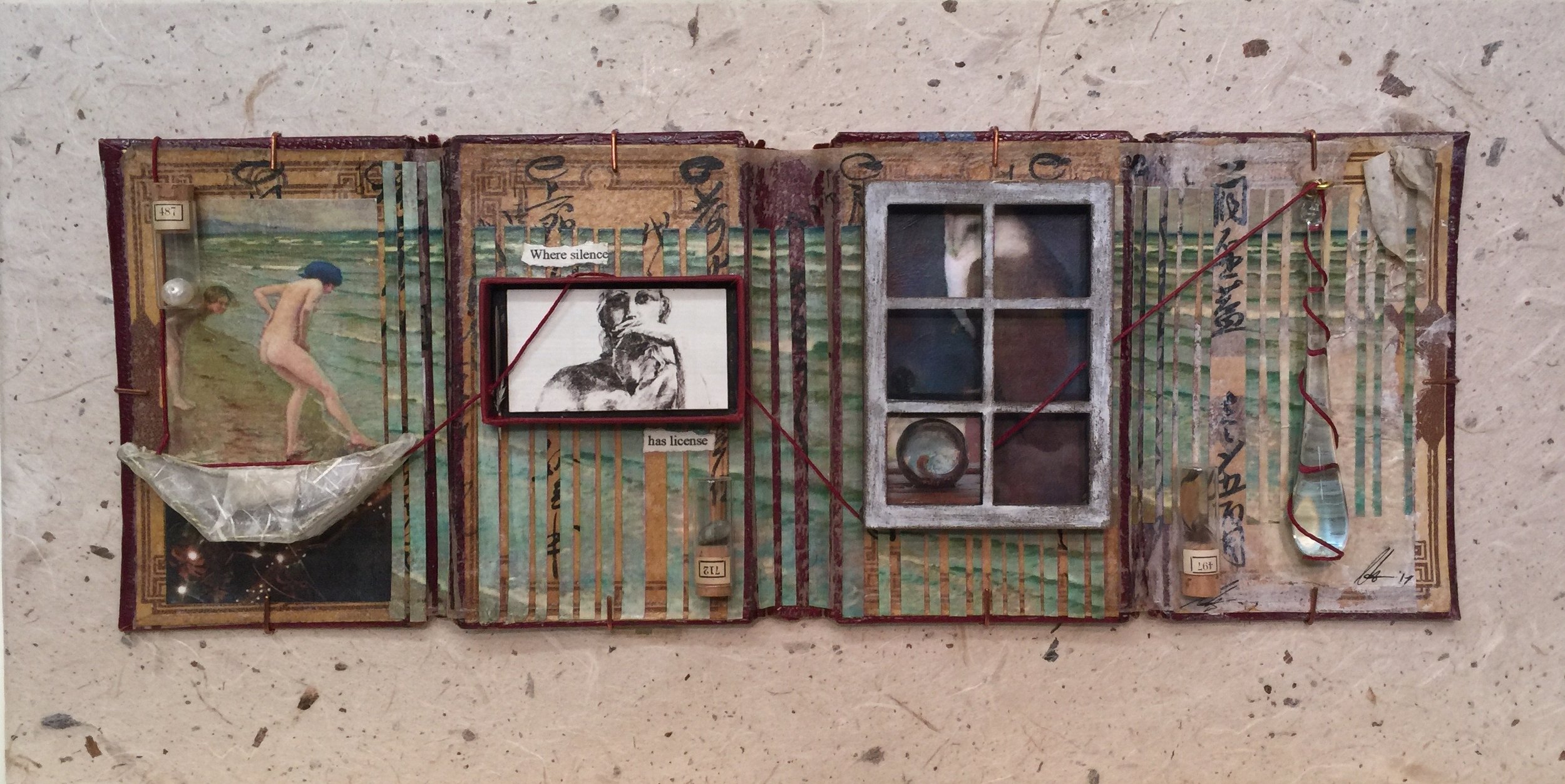
Erika Schmitt, Where Silence Has License, mixed media assemblage
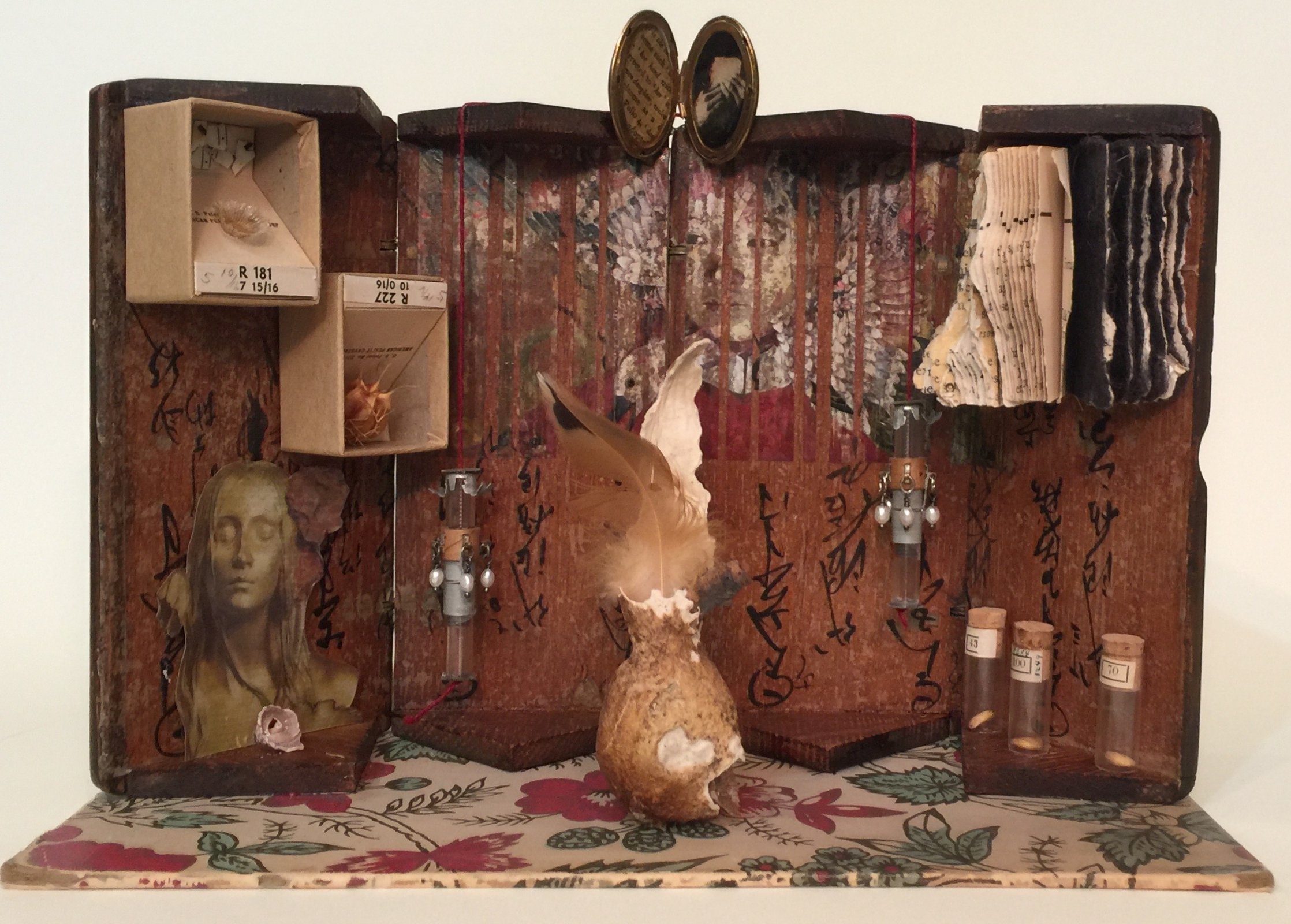
Erika Schmitt, She Who Speaks in Whispers and Half Seen Images, mixed media assemblage
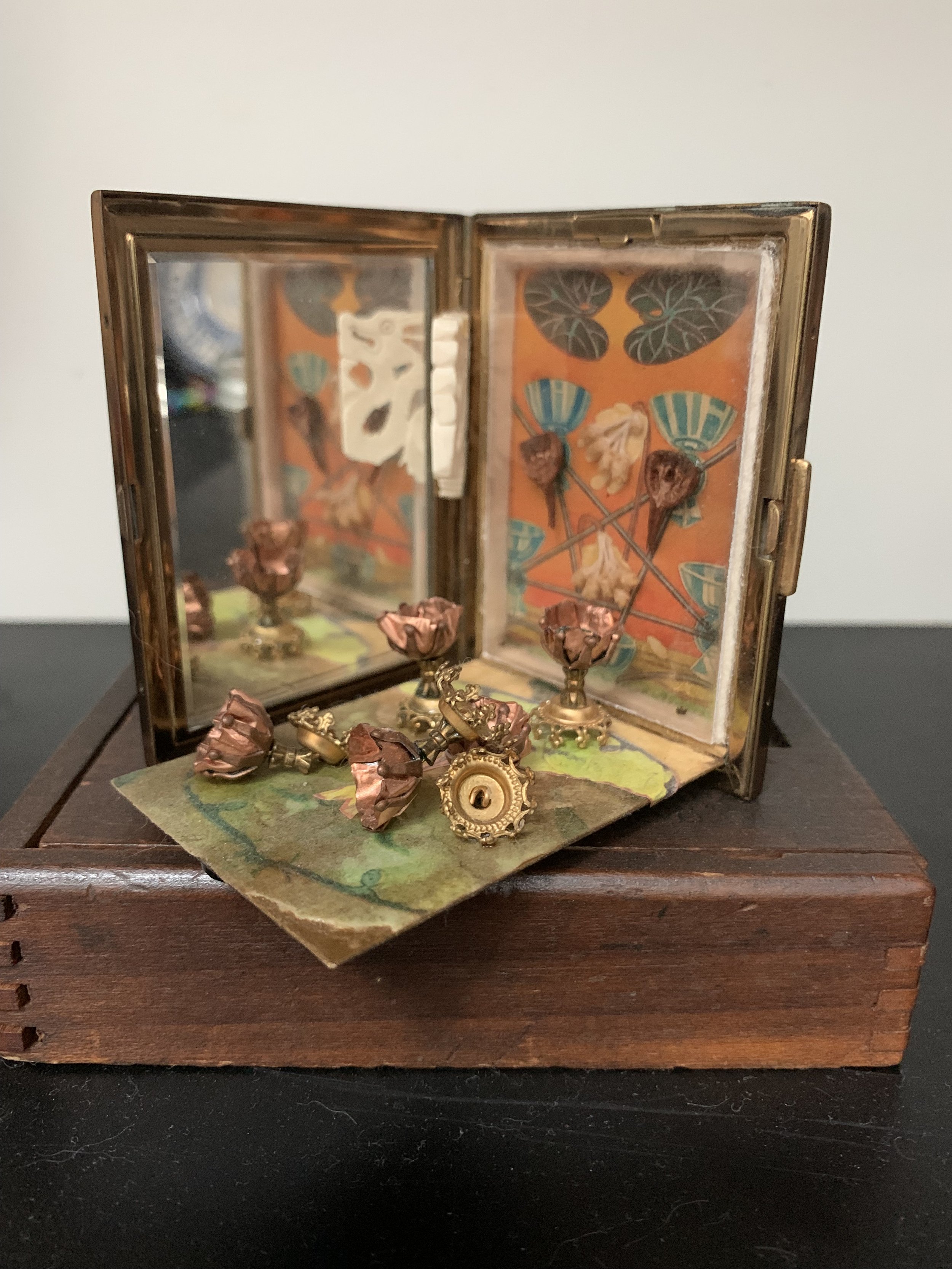
Erika Schmitt, Five of Cups, mixed media assemblage
Alexander Vassalos
I have taken the designs of vintage electric guitars and have redesigned some aspects to optimize the play and feel.
By combining modern machinery and hand-crafted level attention, I am able to make unique and consistent guitars. I like to look at the wood grain, figure, and wood color to decide how to construct the guitar. Symmetry and uniformity that occur naturally provide a beauty of their own, so I take great care in book-matching the guitar caps (face wood). Besides the woodworking aspect, I also wind the pickups, design the pickguards, and do as much in the shop as possible to optimize and individualize.
